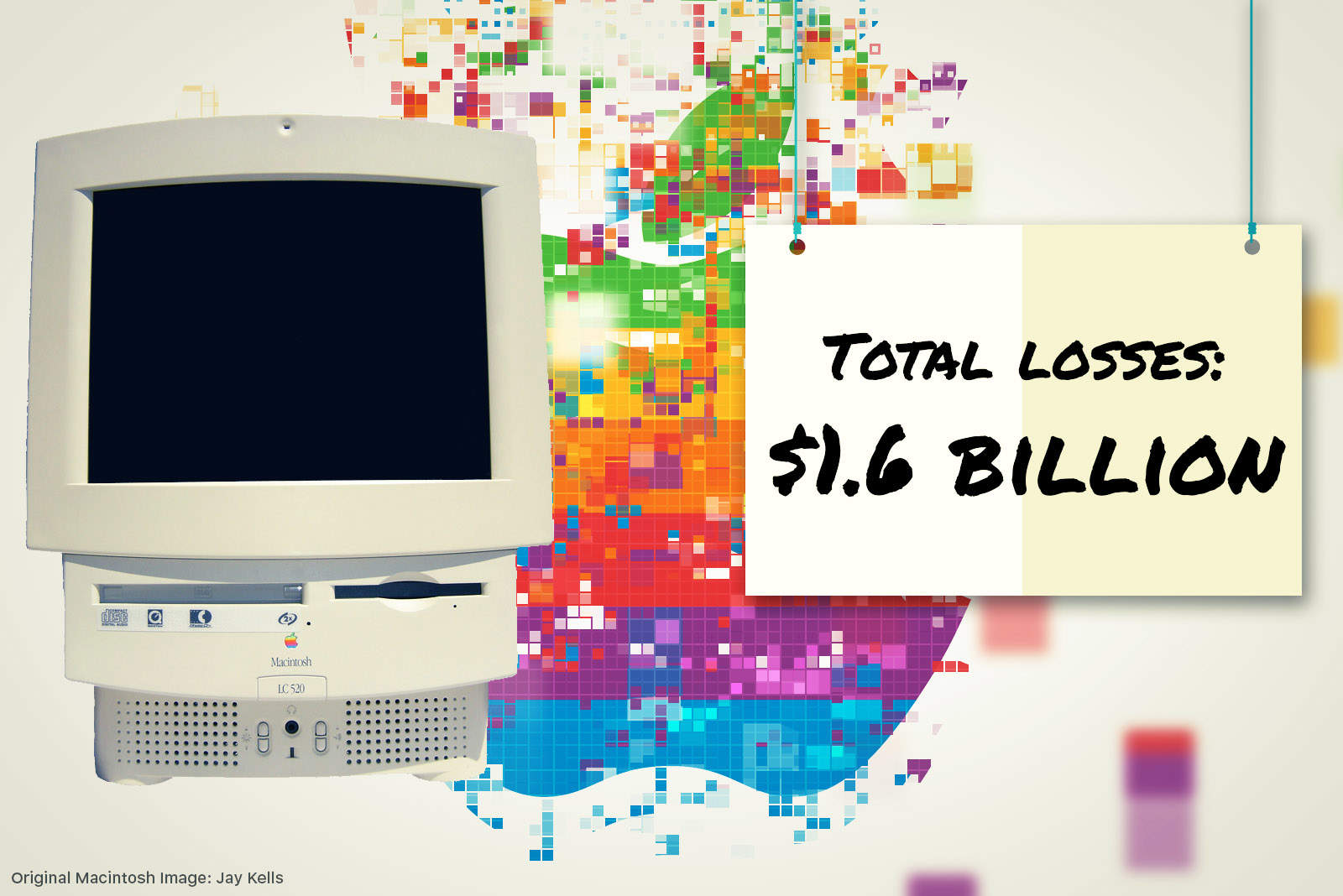 June 27, 1997: The last day of another disappointing quarter brings an end to CEO Gil Amelio’s 500 days running Apple.
June 27, 1997: The last day of another disappointing quarter brings an end to CEO Gil Amelio’s 500 days running Apple.
The $56 million quarterly loss contributes to an overall deficit of $1.6 billion during Amelio’s reign. The slump effectively wipes out every cent of profit Cupertino earned since fiscal 1991. After losing money for six out of the last seven quarters, Apple seems past the point of no return.
The fall of Apple CEO Gil Amelio
The day before the end of the quarter, Apple stock suffered a knock when an anonymous party sold 1.5 million shares. The seller was later revealed to be Apple co-founder Steve Jobs, who had resigned from the company in 1985 after a failed boardroom coup.
By 1997, Jobs was back at Apple as an adviser. Despite this, he seemingly had no qualms about unloading such a large amount of AAPL stock. He later said he had lost faith in the company.
“I pretty much had given up hope that the Apple board was going to do anything,” Jobs said. “I didn’t think the stock was going up.”
This may have been a smart Machiavellian move on Jobs’ part to assume control. However, he certainly wasn’t the only person thinking like this in mid-1997.
Gil Amelio: The turnaround artist who wasn’t
Gil Amelio had been widely touted as a turnaround artist who could revive Apple’s failing fortunes in the mid-1990s. He came to Cupertino with a solid background in engineering. He also made plenty of moves that struck people as smart.
These included rejecting a buyout offer by Sun Microsystems (remember that company?) and continuing his predecessor’s strategy of licensing the Mac operating system. In addition, Amelio downsized Apple’s workforce by around a third, or 5,600 people, in a bid to cut expenditures.
For this, Apple rewarded Amelio heavily. During his time running the company, he received around $1.4 million in salary and a further $3 million in bonuses. He also was granted significant stock options worth multiples of his cash payments. In addition, Apple loaned him $5 million at a low interest rate and paid for him to use a private jet.
Unfortunately for Amelio, none of his good ideas seemed to work. The clone Macs proved disastrous. And, while he was right to downsize Apple’s workforce, his high salary made him look like the bad guy, rather than the struggling company’s savior.
His best move, ironically, was the one that cost him his own job. Looking for a new operating system to replace the aging System 7, Amelio agreed to buy Jobs’ company NeXT. Jobs himself came as part of the deal. Although he said he had no desire to be CEO, Jobs immediately began making moves to push out Amelio.
Steve Jobs on the rise at Apple
After Amelio’s departure, Jobs agreed to take control of Apple as interim CEO until a more suitable replacement could be found. (One never was.) Jobs canceled the clone Macs, continued to cut the workforce (and unnecessary product lines), and began to pour resources into new products he hoped would become hits. He also agreed to work for $1 per year to raise troop morale.
By early the following year, Cupertino was back in the black. Before too long, Apple debuted the iMac G3, the iBook and OS X — three major products that helped transform the company’s fortunes. After that came the iPod, iTunes and … well, the rest is history.
Do you remember the “bad old days” of Apple in the 1990s? Were you an Apple fan at the time of Gil Amelio’s ouster? Leave your comments below.


